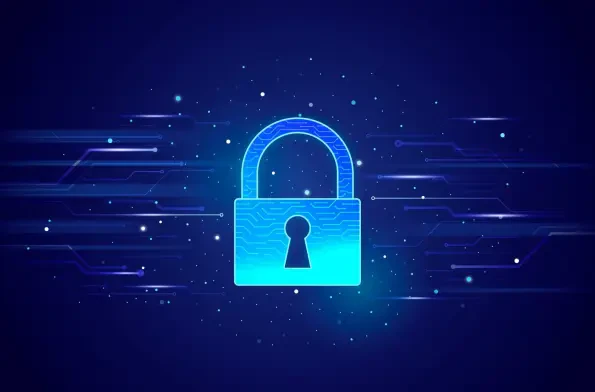Security threats have escalated beyond the digital confines; a recent incident at Glasgow City Council underscores this alarming trend. A breach facilitated by malicious activity on the servers of a supplier to CGI, the council’s IT provider, has disrupted various services crucial for the city’s operations. Citizens have experienced significant impacts, with several key services such as planning applications, penalty charge notices, and school absence reporting facing interruptions. This situation is a stark reminder of the vulnerabilities in today’s interconnected supply chains and the potential repercussions when these weaknesses are exploited.
Overview of the Security Incident
In the midst of an increasingly complex digital landscape, the security breach targeting the Glasgow City Council highlights the persistent risks faced by public entities in safeguarding their digital infrastructure. Managed by a fourth-party supplier of CGI, the council’s IT provider, the affected servers resulted in temporary disruptions to several essential online services. While customer data theft remains unconfirmed, authorities operate under the assumption of potential data exposure, urging citizens to remain vigilant against phishing threats. The council has partnered with Police Scotland, the Scottish Cyber Coordination Centre, and the National Cyber Security Centre, reinforcing the significance of collaborative efforts in managing such incidents.
The technological impact of this breach is multifaceted, encompassing various segments of the council’s operations. The discovery of malicious activity on the council’s servers signifies the increasing prevalence of cybersecurity vulnerabilities, potentially affecting planning applications, penalty charge notices, and certificate orders among others. These disruptions reflect the broader risk posed by threats like ransomware to public services, emphasizing the necessity for robust security measures across local government entities.
Consequences and Mitigation Efforts
Immediate Service Disruptions
The breach immediately impaired several essential services, causing chaos among the general populace reliant on these functions. Areas such as planning applications, penalty charge notices, and school absence reporting were notably compromised, illustrating the extent of digital disruption. To alleviate the adverse effects on citizens, the council executes various mitigation steps, seeking to restore normalcy while maintaining transparent communication channels. Critical services like the finance systems, however, remained intact, offering some relief amidst the chaos.
An immediate consequence for the citizens involves heightened caution regarding potential phishing threats. Given the assumption of possible data exposure, vigilance becomes paramount to mitigate potential scams and identity theft attempts. The council employs strategic communication, advising the public on safely navigating the digital landscape during this uncertain period while initiatives to promptly restore affected services gain momentum.
Response Strategies
Faced with a cybersecurity challenge of significant proportions, the council has embarked on a comprehensive response strategy aimed at securing its systems and ensuring data protection. Efficient isolation of compromised servers showcases proactive management in addressing the threat and minimizing further risk. Clearly delineated preventive measures are being implemented to bolster defenses against potential ransomware or data extortion attempts, setting a precedent for how local government entities can counteract digital threats.
The council swiftly communicates with regulatory bodies like the Information Commissioner’s Office, asserting its commitment to transparency and safeguarding the public trust. By providing detailed guidance on avoiding phishing scams, the council underscores its dedication to protecting citizens’ digital safety while restoring disrupted services. These actions signal a proactive approach in protecting sensitive data and maintaining operational integrity.
Challenges and Complexities
Navigating the complexities inherent within digital security for public entities poses enduring challenges, exacerbated by diverse technological, regulatory, and supply chain vulnerabilities. The incident at Glasgow City Council accentuates the precarious position of municipalities dependent on third and fourth-party providers, illuminating the intricate security ecosystem. Potential solutions rest upon bolstering cyber defenses and enhancing vendor management practices to fortify seamless operations.
Compounding these difficulties, regulatory frameworks create further complexity, demanding precise and expedited compliance across diverse areas. Managing the interplay between regulations and security imperatives requires astute planning and execution, underlining the urgent need for a holistic approach to mitigate technological risks. A concerted effort to prioritize cybersecurity in public domains remains crucial, safeguarding against systemic vulnerabilities that threaten operational efficacy.
Regulatory and Security Response
Key regulatory bodies and security organizations play pivotal roles in addressing the breach, underscoring the importance of compliance practices within cybersecurity protocols. The council collaborates with entities like Police Scotland and the National Cyber Security Centre, actively engaging experts in a coordinated effort to probe the incident and ensure comprehensive security measures. Such collaboration propels proactive regulation and monitoring, forming a formidable alliance against potential threats.
These regulatory responses not only focus on managing the immediate security risks but also examine heightened implications for future safeguarding endeavors. The council’s interactions with the Information Commissioner’s Office demonstrate adherence to compliance benchmarks, paving the way for enhanced security frameworks addressing emerging threats. Amplifying these efforts remains vital in reinforcing local government defenses against ever-evolving digital dangers.
Implications for Future Security Practices
Anticipating the future landscape of digital security, this breach offers profound insights into prospective changes in cybersecurity protocols and strategies. Local government entities must adapt rapidly to emerging trends, aligning with technological innovations that enhance security frameworks. Fortification of cybersecurity practices through cutting-edge solutions holds promise in averting similar incidents, building resilient defenses across public domains.
Consumer vigilance emerges as a pivotal strategy in mitigating risks, encouraging a proactive stance against potential threats. Technological advancement plays a crucial role in redefining how public entities manage security, offering promising avenues for creating robust environments against digital threats. Looking ahead, a unified approach integrating innovation and vigilance will redefine cybersecurity protocols in fostering a safer digital future.
Conclusion and Recommendations
Reflecting on the Glasgow council’s experience reveals a compelling journey marked by resilience and strategic prowess in safeguarding public assets. Despite the challenges posed by the breach, swift and informed actions have ensured minimal data exposure and restored essential services. Looking forward, local government entities are encouraged to bolster their cybersecurity frameworks, emphasizing vendor management and coordinated regulatory responses.
Recommendations for enhancing cybersecurity within municipalities focus on proactive collaboration with security organizations, ensuring preparedness against future threats. Public entities benefit from investing in technological innovation to fortify defenses, complemented by continued transparency and citizen education regarding potential risks. Strengthening supply chain security stands paramount, establishing a robust foundation to withstand the intricacies of digital vulnerabilities.













